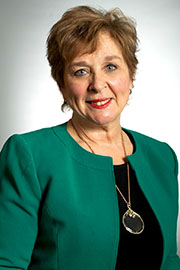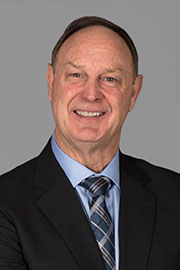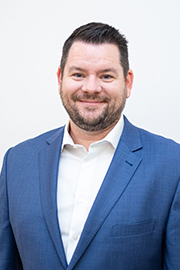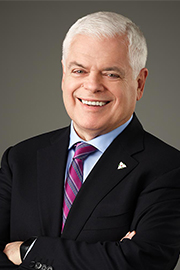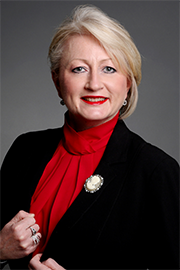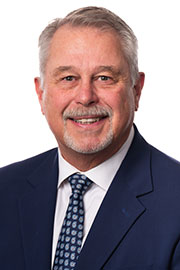- Sep/27/23 9:00:00 a.m.
Good morning. Let us pray.
Prayers.
Miss Surma moved second reading of the following bill:
Bill 131, An Act to enact the GO Transit Station Funding Act, 2023 and to amend the City of Toronto Act, 2006 / Projet de loi 131, Loi édictant la Loi de 2023 sur le financement des stations du réseau GO et modifiant la Loi de 2006 sur la cité de Toronto.
- Hear!
- Rabble!
- Sep/27/23 9:00:00 a.m.
- Re: Bill 131
I’m happy to rise for the second reading of Bill 131, Transportation for the Future Act. I will be sharing my time today with the Associate Minister of Transportation, my former parliamentary assistant, the MPP from Scarborough.
Infrastructure plays a critical role in supporting the quality of life enjoyed by all Ontarians. It’s what makes our roads safer, our travel more convenient, and our communities healthier and more vibrant. When we build hospitals and long-term-care homes, we’re ensuring the most vulnerable people and our loved ones are taken care of. When high-speed Internet infrastructure is deployed, we’re ensuring that all communities across the province can participate and thrive in the 21st-century digital world. When a new highway or transit line is built, we’re helping hard-working residents get home to their families faster.
Our government is moving forward with the most ambitious capital plan in Ontario’s history by investing more than $184 billion over the next decade. We are making historic investments in infrastructure that will make a difference in people’s lives while creating good jobs in communities across Ontario.
Every day, our ministry is working hard to improve the lives of millions of people. But to do that, we need to build better infrastructure, faster and more efficiently, while saving taxpayers money. That includes a well-functioning transit system that is critical for those who rely on it every single day, whether they’re travelling to work or school, visiting family or friends, or making their way to a medical appointment.
Now, more than ever, our province continues to grow at an unprecedented rate. There is an urgent need to build better transit for the future. We have much work to do, and we cannot delay. We know that we face challenges that, if left unchecked, will lead to much more significant problems down the road.
We know that our province, like many areas across the country, is facing a housing crisis. We also know that we’re experiencing the fastest population growth in years. Therefore, we need the necessary infrastructure to support this growth. We need to deliver a transit system that meets the challenges of today, while preparing for the needs of tomorrow. And we need new tools that will help fund and deliver new transit stations, while expediting transit-connected housing to meet our goal of building at least 1.5 million new homes by 2031.
That’s why, today, we are introducing the Transportation for the Future Act, 2023, that, if passed, would build more GO transit stations, spur more housing and create mixed-use communities around transit, resulting in a more convenient commute across the greater Golden Horseshoe. Speaker, before getting into the legislation, I’d like to talk briefly about why this is so important.
We have over 500 kilometres of GO rail service. As we expand service with OnCorr, we also have an opportunity to build new stations. These transit-oriented communities will bring more housing, jobs, retail and public amenities close to transit. People’s day-to-day lives are getting busier. Between work, family and other responsibilities, they not only want convenience; they need it. TOCs create places that are more livable and walkable. By building transit where people live and work, we are increasing ridership, reducing gridlock, stimulating economic growth, increasing housing supply, and lowering the cost of building infrastructure for taxpayers. And we’ve made excellent progress. Work is already under way to deliver eight TOCs along the new Ontario Line and Yonge North subway extension, which will create approximately 77,000 jobs and about 48,000 residential units, including affordable housing. We are also creating new housing and mixed-use communities around GO stations within the greater Golden Horseshoe.
Through TOCs, we are taking a bold and innovative approach to city building. To support the delivery of GO expansion, several years ago, the province, through Metrolinx, introduced a market-driven strategy to help build new stations and improve existing GO stations. That meant new stations would be delivered by the private sector, where financially feasible. While that strategy has worked well and transit-oriented communities are being built, this approach typically relies on one single landowner or building partner, and it could mean years before a new station is actually built.
Our proposed legislation would, if passed, create a station contribution fee as an innovative new tool that municipalities can use to help spur the construction of new GO transit stations, leading to accelerated transit expansion and vibrant, complete mixed-use communities with much-needed housing. If adopted, it would allow municipalities to recover costs from funding the design and construction of new GO transit stations. The station contribution fee would be charged on new developments within areas surrounding these new GO stations identified by municipalities, with revenue collected over time, as transit-oriented communities are built around them. The municipality would only collect the fee until the full station costs are recovered. Municipalities proposing to use this tool would be expected to show a reduction in other development costs to help offset the fee. To give an example, municipalities could reduce parking requirements, which is a huge development-related expense. Such a reduction would be made possible because of the introduction of new transit, which would reduce the reliance on single-occupancy vehicles and the number of required parking spaces. Therefore, municipalities, builders and Metrolinx will have to work together to keep costs down. Together, we will build more stations, housing, and improve access for riders. Also, it is important to note that this would be an optional tool that could only be used in places where the province has determined a new GO station is warranted. We have consulted with a number of municipalities, and they have indicated their support for such a tool to help them expedite transit expansion in their jurisdictions.
If passed, our proposed legislation would help municipalities take an active role in transit expansion and delivery, while serving as a catalyst for unlocking new transit-oriented communities without burdening taxpayers. It would lead to more housing, local businesses, investment opportunities, reduced travel times and better connections across the province, benefiting residents and municipalities, and encouraging more housing near transit. And it means stations will be delivered sooner in many communities.
This voluntary tool could help deliver new stations along the Lakeshore East extension into Bowmanville, Lakeshore West into Niagara, and along the Milton and Kitchener lines.
This is a win-win-win for the province, municipalities and residents. It would mean that transit stations are built sooner, at little cost to the province and taxpayers. The proposal would give municipalities an additional revenue tool to bring a regional transit connection into their cities and their towns, spurring economic growth and bringing vital housing to their residents.
Meanwhile, residents and local businesses will clearly benefit from a new transit station that connects to jobs, opportunities and destinations throughout the region, as well as the increased housing options that are built around them. It means more convenience. It means fewer cars on the road and less time spent in traffic. It means getting to where you need to go faster and more conveniently, with more travel options. And it means more businesses forming in those communities, and more jobs, along with opportunities for those businesses to reach even more customers. It will be especially beneficial for less densely populated areas that have limited or no access to regional transit, as rural and urban areas are further connected. It will help boost local economies, such as local construction and engineering businesses that benefit from the design and construction of new stations.
And with increased growth around future stations, we’re also encouraging more walkable communities, further stimulating the local business economy as more people walk by and visit shops, restaurants, cafes and local services. It will mean people can have better access to vital services in their communities and across the region, such as education and health care, while benefiting those who rely on public transit every day. And this will help more people reduce their carbon footprint.
Everyone benefits from better transit infrastructure and greater regional connections. Should municipalities choose not to use this proposed funding tool, the province will continue to work with them through a market-driven strategy to help fund and build new GO stations.
Speaker, this proposed tool would be used with the utmost transparency, as municipalities will be required to conduct a background study and also consult with the community on that study before submitting a proposal to the province. The decision will then lie with the province to approve the use of the station contribution fee for each municipality. The province would only select proposals where the municipality is in a financial position to ensure they have sufficient borrowing capacity.
When we were developing this innovative new tool, we looked to other jurisdictions to find best practices. Studies have shown how collaboration amongst government, transit agencies, municipalities, builders and others can help finance world-class transit infrastructure. Fees like our proposed station contribution fee have been part of financing strategies for successful transit expansion projects such as new stations in various countries.
In fact, the use of land value capture funding methods similar to our proposed tool is well documented. These methods have, for example, been used to fund two world-renowned transit systems.
In Hong Kong, they have a model where transit is built simultaneously with residential development by capturing real estate income to finance the capital and operating costs of new transit. This approach has been adopted to deliver several projects in the city, including Kowloon station, Tin Hau station and the Island Line.
Meanwhile, in London, UK, you’ll find a major cross-London rail link that serves the entire region called the Elizabeth line. That line was made possible through an innovative program of project financing and land value capture.
We also found other examples of development-based fees in North America that helped fund the costs of building transit infrastructure.
The city of Vancouver has a development cost levy that applies to new development projects through the amount of square footage, similar to how our proposed station contribution fee would be implemented. The funds collected through this levy are used to support various infrastructure projects, including transit.
Portland, Oregon, uses a transportation system development charge applied to new development projects. It helps fund transportation infrastructure, including transit expansion and construction of new stations.
So our proposal follows in the same tradition of best practices used around the world.
TOCs have also been successfully implemented in cities like Sydney and Washington, DC.
Speaker, it’s time that we think of innovative, creative solutions that will help reach our common goals, help build much-needed housing, and ensure our infrastructure meets the needs of today’s rapidly growing population.
Earlier this year, I had the honour of leading an infrastructure mission to Japan to continue building on our history of friendship and close economic and cultural ties. I was there to strengthen relations, share best practices and exchange ideas with key Japanese builders on building urban railways and transit-oriented communities, while also promoting Ontario as a place to invest. We met with officials from various government bodies and transit companies, including Tokyo Metropolitan Government; Ministry of Land, Infrastructure, Transport and Tourism; Osaka Prefecture; Tokyo Metro; and JR Central. I also met with private sector leaders with extensive experience in infrastructure development. It was a wonderful opportunity to be able to exchange ideas on building key infrastructure, including urban rail and transit-oriented communities. I visited Shinjuku Station, which had well over 200 exits, surrounded and filled with shops and restaurants. I rode the Shinkansen, also known as the bullet train, visited Tokyo Station, and learned about all of the different lines for the local subway system, the regional system, and the bullet train. As we are also building transit-oriented communities here in Ontario, it was extremely valuable to learn how jurisdictions like Tokyo developed TOCs, which created mixed-use communities around their transit stations.
Japan has the world’s most extensive railway network and one of the most reliable transit systems, with countless examples of successful and vibrant communities centred around their stations. We found that what makes their transit-oriented communities so successful was thinking outside of the box, along with the partnerships between various levels of government, transit agencies and municipalities, and the adoption of various land value capture models.
If we want a world-class transit system, now is the time for creative solutions.
This proposed tool, if adopted by municipalities, will help accelerate transit expansion all across the greater Golden Horseshoe and unlock significant housing opportunities across the region. It will help address the challenges associated with the typical market-driven approaches that require a single landowner and building partner, especially for communities outside of Toronto.
If adopted, the proposed tool would apply to all landowners and developers looking to redevelop within a specific area around a GO station, which means that the funding contribution is spread out among many interested parties instead of just one. It would also provide more certainty around the timing and the delivery of the station, and it would allow municipalities to initiate and have more control over when the station will be delivered, while encouraging them to take an active role in spurring more housing in their jurisdictions. If a municipality funds the delivery of the station using this proposed tool, the province, through Metrolinx, would be responsible for owning, operating and maintaining it upon completion.
It’s exciting to see various levels of government and our private sector partners working together to build better transit and create vibrant mixed-use communities along our transit lines, while addressing one of the biggest issues of our time by spurring the creation of more housing. Speaker, by passing this legislation and approving the use of this new tool, we will create more GO stations and transit-oriented communities so that people can get to where they need to go faster, while reducing gridlock and encouraging economic renewal and growth. TOCs are a forward-thinking approach to strengthening the relationship between transit, employment, housing, commercial spaces and public amenities to create vibrant and mixed-use communities.
With today’s challenges, it’s time we build a world-class transit system that looks to the future. That’s why we are taking bold steps to build integrated mixed-use communities around the subway and the existing GO rail network. This will help families and businesses better access transit and jobs in their neighbourhoods so they can better participate in our province’s economy. By bringing jobs and housing closer to transit, we’re also helping the environment by reducing greenhouse gas emissions, resulting from fewer cars on our roads.
Our Transit-Oriented Communities Program is allowing us to leverage third-party investment to explore new funding avenues and opportunities to deliver the cost-efficient transit solutions commuters have been waiting for, and we are making terrific progress.
On the Ontario Line, we have proposed transit-oriented communities at six stations. East Harbour will be an integrated transit-centric station that will include a diverse range of commercial, residential, affordable housing, retail, food, cultural uses, and community amenities. The site will be a multimodal transit hub incorporating GO train, TTC light-rail transit and the future Ontario Line subway. It will also become the gateway to the Port Lands. At Corktown station, the site will provide a mix of new housing opportunities and commercial, retail and public realm space, while commemorating the history of the first Parliament site. The other three transit-oriented communities along the Ontario Line south will be at Exhibition, King and Bathurst, and Queen and Spadina stations, featuring new housing, office and retail space.
Most recently, we announced a proposed transit-oriented community on the northern portion of the Ontario Line at the future Gerrard station, which will create about two acres of public space including access to retail, a grocery store and other amenities, while adding housing and jobs and a new public park. The future Gerrard station will connect users to local TTC bus, streetcar and subway service.
Interjection.
- Hear!
- Rabble!
- Sep/27/23 9:20:00 a.m.
- Re: Bill 131
You like that one station?
We’ll continue to work closely with the city of Toronto and York region to identify and plan additional opportunities to bring more transit-oriented communities to subway stations. More will be announced very soon.
As I mentioned earlier, we are also creating new housing and mixed-use communities around GO. For example, Ontario is already working with partners to explore a transit-oriented community at the new Woodbine GO station in Etobicoke along Highway 27. This proposed station would help residents in Etobicoke and surrounding areas connect to the GO line and get to where they need to go, while serving as a future hub for economic development and jobs, and increasing housing opportunities.
We’re also working with a builder to construct key improvements to the existing Mimico GO station, including a new, fully accessible main station building and the extension of a multi-use greenway path for pedestrians and cyclists to use to access the station. This TOC is expected to create more than 2,000 housing units, including affordable housing options, along with retail, a passenger pickup and drop-off area, and enhanced station amenities, including hundreds of new underground parking spaces and spaces for bike storage. It will transform Mimico GO station and the surrounding area, bringing more housing, office and retail right next to transit in this rapidly growing area.
Having a third party construct and deliver improved transit infrastructure reduces costs for the taxpayer, while also creating opportunities to bring more jobs and housing closer to transit.
We continue to work with Metrolinx and local municipalities to plan additional transit-oriented communities at GO rail stations throughout the greater Golden Horseshoe.
Speaker, if passed, our proposed legislation will complement these efforts by helping to build stations in communities around Ontario sooner. It will bring new transit stations right to the doorstep of where people live, work and play, creating thriving communities and providing new ways for residents to get to where they need to go. And we can’t do that without our partners. It’s clear that we can no longer build transit stations in isolation. With our historic transit expansion, we cannot waste this opportunity.
By 2041, Ontario’s population is expected to grow by 30%; the reality is, our infrastructure needs to grow with it. To meet the demands of this rapid population growth, we need to continue to build new and better infrastructure. Our province also faces increasing risks and pressures on the capacity of its infrastructure if we do not make these critical investments today to keep up with a growing population.
Together, it’s time to move things forward, to get things done, collaborating with our municipalities and those who will help us build more infrastructure. It’s time to think outside of the box, and it’s time to build for the future—a future with better transit, more housing, and more vibrant, mixed-use communities so that we build a stronger, more prosperous and more competitive Ontario now and for many years to come.
- Hear!
- Rabble!
- Sep/27/23 9:20:00 a.m.
- Re: Bill 131
I am honoured to rise in this House for the first time, as the Associate Minister of Transportation, to speak on Bill 1, the Transportation for the Future Act, 2023.
I would like to thank my honourable colleague Kinga Surma, the Minister of Infrastructure, for her remarks. I’m thrilled to stand by her today as Ontario’s new Associate Minister of Transportation, having served as Minister Surma’s parliamentary assistant for over a year. I am forever grateful for her guidance and support.
Thank you, Minister Surma.
Madam Speaker, it is a pleasure to rise to speak in support of Bill 131; specifically, on how the proposed legislation sets the groundwork for making travel more convenient for transit riders in and around the Toronto region. At a fundamental level, the City of Toronto Act amendments proposed in Bill 131 are proof that our government is a collaborative government—a government that is willing to work with municipal partners to get it done for the people of Ontario. In the spirit of collaboration, the City of Toronto Act amendments are our direct response to the city of Toronto’s request to run its transit system the way it sees fit to better serve its residents and neighbours. In sum, the proposed changes in Bill 131 provide the city of Toronto with the tools to better integrate transit services with other regional transit networks by allowing the TTC to enter into cross-boundary service agreements with neighbouring transit agencies.
Speaker, this is great news for commuters, who, at the end of the day, don’t care about what colour bus they are getting on. They only care about getting from point A to point B safely, quickly and affordably.
Working in close collaboration with our municipal partners for the benefit of transit riders around the greater Golden Horseshoe is something our government, I’m proud to say, is making a habit of doing, whether that be in terms of improving existing service or building for the future. In regard to the former, our government is making transit more convenient and easier to use by offering riders more ways to pay.
Following the successful rollout of credit payments on GO transit and most local transit agencies across the 905 between September 2022 and early 2023, in May of this year we launched debit payment across much of the Presto system, including GO transit, UP Express, Brampton Transit, Burlington Transit, Durham Region Transit, Hamilton Street Railway, MiWay in Mississauga, Oakville Transit and York Region Transit, allowing riders to get on board with just a tap of their debit card, including debit cards stored on their smart phones or smart watch.
This upgrade marked another milestone for the Presto system, giving transit riders yet another convenient payment option when travelling for work, school and more, and demonstrating our government’s commitment to making the transit experience easier for Ontarians, no matter where they live.
The launch of credit and debit payment on GO and local transit agencies around the 905 served as another example of our government making transit more convenient. By increasing transit payment options, we gave more people more options to access public transit in ways that work for them.
We didn’t stop there. Last month, we made it even easier and more convenient for commuters in Toronto to take the TTC. Since August 15, TTC riders have been able to use their credit or debit card—including cards, as I said, stored on their smart phones or smart watches—to pay their fares. This is a game-changer for anyone who uses the TTC, and it has made life more convenient for people across the GTA area, once again proving that our government’s efforts, working in tandem with partners like the city of Toronto, are actually paying off.
Whether Ontarians are travelling for work, for appointments or anything in between, the transit experience should be safe, fast and as convenient as possible. Adding the option to tap a debit or credit card on Presto devices across the TTC gives riders more choices in how they pay their fares as they travel throughout the region. More choice is not only what Ontarians need; it’s what they deserve. And that’s exactly what we will continue to deliver.
Since our government took office, we have worked with municipal partners to make it easier for transit riders to get from point A to point B. We are continuing to do that by improving Presto services and introducing new and innovative payment options that make fare payments faster and more convenient than ever before.
In addition to making public transit more convenient, we’ve also made it more affordable. By working together with municipalities and transit partners, we have eliminated double fares on transit throughout much of the greater Golden Horseshoe. That means when you transfer from, for example, a Mississauga MiWay bus to a GO transit train, you only pay the GO fare.
Our government’s introduction of one-fare transit travel has been a game-changer for commuters around the 905, saving riders hundreds—in some cases, thousands—of dollars, leaving more money in families’ pockets at a time they need it the most. For example, a Mississauga resident who commutes five days a week using MiWay and GO Transit can now save $1,600 a year on their transit expenses. That’s a game-changer savings for riders. Imagine having an extra $1,600 or more each year to pay for your family expenses, save for a trip, or invest for the future of your kids. Thanks to the work done by former Associate Ministers of Transportation Miss Kinga Surma and Mr. Stan Cho, in collaboration with our ministry partners and transit partners, these savings are now a reality for many Ontarians in the greater Golden Horseshoe. Because of their efforts and those of our municipal partners, today GO Transit riders pay only one fare when connecting to Barrie Transit, Bradford West Gwillimbury Transit, Brampton Transit, Burlington Transit, Durham transit, Grand River Transit, Guelph Transit, Hamilton Street Railway, MiWay, Milton Transit, Oakville Transit and York Region Transit. That’s a lot of transit agencies that serve a lot of riders.
I’m happy to report that for riders right here in the city of Toronto—
- Hear!
- Rabble!
- Hear!
- Rabble!
- Hear!
- Rabble!
- Hear!
- Rabble!
- Sep/27/23 9:30:00 a.m.
- Re: Bill 131
Absolutely.
Madam Speaker, right now, one-fare transit travel is coming soon to the city of Toronto. As with the introduction of open payment, we have taken a measured, phased approach to the elimination of double fares, starting with the local agencies outlined above and working our way up to the TTC, North America’s third-largest transit agency. Over the coming months, because of the great work done by the former Associate Minister of Transportation, our government, Metrolinx, the TTC and the connecting agencies in the 905 will continue to perform design and assessment work so that our collective systems are aligned for fare integration.
By early 2024, Toronto riders can expect one-fare transit travel. And do you know what, Madam Speaker? Our government is fully funding this initiative. To be clear: What this means for riders is that when connecting to the TTC from anywhere in the GTA, you will no longer have to pay double fare or triple fare; you will only pay one fare. Eliminating double fares for commuters in the city will save riders considerable money every year, helping families combat the affordability crisis that they’re facing right now, save for a rainy day, and relieve just a bit of that stress that so many people are feeling now.
Cutting costs for commuters is important to our government. That is why we didn’t just create one-fare transit travel for much of the greater Golden Horseshoe; we went further. In March 2022, we also increased Presto discounts for youth and post-secondary students. These riders now enjoy a 40% discount compared to a full adult fare. This applies to youth and anyone enrolled in post-secondary education who rides on GO Transit or takes the UP Express.
We also launched an affordability pilot program for low-income riders accessing GO Transit in the Peel region. Today, adult riders who enrol in Peel region’s affordable transit program are reimbursed 50% of their Presto fare when they travel on GO Transit. This has tremendous benefits for low-income residents of Peel region. We look forward to rolling out our affordability pilot to other cities soon.
Just last month, we reduced the cost of a physical Presto card from $6 to $4, cutting the price commuters pay to access the Presto program by one third.
All these initiatives have made life more affordable for Ontarians and have helped get people from point A to point B with less stress and less hassle.
Moving forward, we will continue to work in lockstep with our municipal partners to make public transit as affordable and as convenient as possible. That’s why we have created a Fare and Service Integration Provincial-Municipal Table made up of senior representatives from transit systems in the greater Golden Horseshoe and along the GO Transit rail network. The table is focused on short-term building blocks that are needed to improve fare and service integration while developing a long-term vision that will see riders throughout the greater Golden Horseshoe transition seamlessly from one transit provider to another transit provider. Currently, the table consists of senior representatives from transit agencies in Barrie, Brampton, Burlington, Guelph, Hamilton, Mississauga, Toronto, Durham region, Niagara region, Waterloo, York region, Peel region, Oakville and Milton.
As we continue to make progress on fare and service integration, engaging with our municipal partners and engaging with transit systems will be critical, especially as our population continues to grow at a rapid pace.
Speaker, one last note on improving our existing transit network: As we emerged from the pandemic, municipalities saw an increase in ridership on public transit. With more people returning to public transit, our government was happy to provide municipalities with the funding they needed to accommodate more riders. In February of this year, we were pleased to provide more than $379 million to help municipalities operate and improve their local transit systems. That funding, which was delivered through the provincial gas tax program, was used to extend service hours, buy transit vehicles, add routes, improve accessibility, and upgrade infrastructure.
To make up for reduced gas sales during the pandemic, we provided an additional $80 million to municipalities to ensure they could continue supporting their transit systems as riders began to increase. Throughout Ontario, 144 communities across 107 municipalities benefited from this funding, which helped them deliver reliable service to riders at a time when ridership was booming after two years of slowdown. This was just one example of our commitment to working in co-operation and collaboration with municipalities across the province to improve public transit.
But our government’s stellar work to improve public transit doesn’t stop there. Not only are we improving the existing transit experience today, but we are building the necessary transit infrastructure for the future. In recent years, we have made historic investments in public transit across the province of Ontario. We have done this in collaboration and co-operation with our municipal partners, working together to get Ontarians, as I said, from point A to point B quickly and safely. And by doing that, we are keeping our economy growing.
Ontario’s population continues to grow at a rapid pace. Every year we are welcoming more than 500,000 new Canadians to Canada, who mostly settle in Ontario, in the GTA. These new Canadians are eager to contribute to our thriving economy and are proud to call Ontario home, but they can’t get ahead if they’re stuck in gridlock. Whether you’re new to the province or you have lived here all your life, you should be able to get to where you’re going safely and quickly. Our government is committed to making sure that happens, and that is why we’re investing more than $70 billion over the next 10 years to transform public transit infrastructure throughout the province. Public transit is a key driver of economic growth in Ontario, helping connect people to their destinations, whether they’re going to school, going to appointments, going to work or running errands. Our government is committed to working with our municipal partners, providing them with the funding they need to accommodate growing ridership on public transit, and this funding helps our municipal partners to continue to deliver a safe and reliable transit network for people in their communities, benefiting Ontarians across the province, improving their quality of life, and helping them contribute to our economy.
Madam Speaker, last year our government achieved several milestones en route to completing the largest transit expansion of its kind in Canadian history, including breaking ground on the Ontario Line.
The Ontario Line will add 15 kilometres of new subway track to the city of Toronto’s transit system. Once complete, the new line will have a total of 15 stations delivering up to 40 trains per hour, with wait times as short as 90 seconds, and add six interchange stations connecting to existing transit lines. It will reduce crowding by as much as 15% at some of the TTC’s busiest stations, including—
- Hear!
- Rabble!
- Sep/27/23 9:40:00 a.m.
- Re: Bill 131
Absolutely.
The busiest stations that we’re going to connect are going to be Union station, Bloor-Yonge station and Eglinton station. This historic investment in Toronto’s transit system will reduce gridlock and get commuters from point A to point B safely and quickly and give more people access to rapid transit within walking distance of their homes, accommodating up to 388,000 riders per day. The progress we have made to date wouldn’t be possible without working in collaboration and co-operation with our partners at the city of Toronto.
Construction for the Ontario Line is currently under way at Exhibition station, at the site of the future Corktown and Moss Park stations, and in the joint rail corridor east of the Don River. Contracts have been awarded for the southern portion of the line, which will include four new underground stations, two new underground stations that will connect to existing subway stations, and one above-ground station that will integrate with the Exhibition GO station.
In April, our government reached another milestone in our plan to deliver fast, reliable transit for the greater Toronto area. We began issuing requests for proposals to design and build the Pape tunnel, underground stations, and the elevated guideway and stations for the Ontario Line. The contract for the Pape tunnel and underground stations will deliver three kilometres of twin tunnels and two new stations, one at Cosburn Avenue, another at Pape Avenue, where the all-new Ontario Line will connect to the subway’s existing Line 2.
The contract will also include the construction of two new portals where the Ontario Line will transition between above-ground and underground operations, and the contract of the elevated guideway and stations includes a three-kilometre elevated guideway, emergency exit buildings and five above-ground stations, two within Metrolinx’s existing rail corridor and three along the elevated guideway on the northern part of the route. This is important progress on the Ontario Line, on this monumental project—again, progress that would not have been possible without working in close collaboration with our partners.
Speaker, building our province through critical public transit projects such as the Ontario Line is vital to supporting our economy, alleviating the gridlock on our roads, and creating thousands of well-paying local jobs. The Ontario Line alone will support 4,700 jobs annually during construction over the next decade. It will reduce commute times and connect more people to housing across the greater Golden Horseshoe and beyond. We are making it faster and easier for everyone to access reliable transit in their own neighbourhoods by improving connections to other subway, bus, streetcar, light rail transit and regional rail services. And we’re working with municipal partners in Toronto and surrounding regions to make sure this important work gets done quickly.
Madam Speaker, our government recognizes how important it is to build transit that will connect communities and create new travel options for people across the greater Toronto area. Another milestone initiative that will help us achieve that goal is the Yonge North subway extension, which will extend the TTC’s Line 1 subway by approximately eight kilometres up into Richmond Hill. The extension will include an approximately 6.3-kilometre tunnelled segment, as well as an above-ground segment that will run along the existing rail corridor on the northern section of the route.
Once complete, the Yonge North subway extension will connect with local transit services and GO transit, improving access to public transit for area residents; reducing travel time for the residents; contributing to our economy by creating jobs and connecting Ontarians to employment opportunities; and reducing gridlock and gas emissions. Once complete, this vital piece of infrastructure will accommodate more than 90,000 daily trips and bring faster transit to more communities across York region and Toronto. The Yonge North subway expansion will put 26,000 more people within a 10-minute walk of transit and is expected to reduce daily travel times for commuters by up to 22 minutes. The extension will create thousands of jobs during construction and generate over $3.6-billion worth of total economic benefits to help stimulate the economy, and it is a key part of our plan to deliver vibrant, complex and mixed-use communities around transit stations for the people of Toronto and York region.
Earlier this spring, we got one step closer to breaking ground on the Yonge North subway extension. In April, the province issued a request for qualifications for the extension’s advance tunnel contract. This marked another significant milestone in our plan to reduce gridlock, connect people to jobs and make travel between York region and Toronto faster and easier. The advance tunnel contract focuses on designing the tunnels and building the launch and extraction shafts that will be used for the tunnel-boring machines, and that contract also includes the design and construction of headwalls for stations and emergency exit buildings.
To deliver the new subway as quickly as possible, tunnelling will begin first, followed by a separate contract to build the stations, rail and systems. Early progress on the Yonge North subway extension is currently under way at Finch station, where workers are making upgrades to accommodate the future subway service. This is a great step forward for the Yonge North subway extension and the overall multi-billion dollar transit expansion under way across the GTA.
All said, the progress we have made to date demonstrates what we can achieve when we work together with partner agencies and municipal governments to expand transit for our residents. A project of this magnitude has far-reaching benefits for local jobs, for the economy, for the environment, and for commuters. By building critical transit like the Yonge North subway extension, we are ensuring sustainable growth for the region, providing future generations with the means to move freely and giving people access to more choices and more opportunities.
Speaker, York region is a fine example of one of our province’s rapidly growing communities. Every day, more families, businesses and commuters are moving to York region, and they’re choosing GO transit to get to their destinations. Throughout the summer, we continued to deliver on critical infrastructure upgrades for public transit systems by collaborating with our local partners in York region and investing in major infrastructure upgrades for the Aurora GO station.
By 2041, the Aurora GO station is expected to serve more than 5,000 commuters per day.
By 2055, GO rail will become one of the busiest railways in North America, with more than 200 million annual riders.
To address this explosive growth, we were thrilled to announce major infrastructure upgrades at the Aurora GO station just last month. These upgrades aim to provide commuters with better service, more transit connections, and future two-way, all-day service between the Aurora GO station and Union Station in Toronto. The infrastructure upgrades at the Aurora GO station will include a new, second platform, a new pedestrian tunnel with elevators, additional parking spaces, and rail signal upgrades. Once complete, the new station will improve accessibility for riders and support Ontario’s plans for 15-minute two-way all-day service on the Barrie line, better serving communities such as Aurora, East Gwillimbury and Newmarket, connecting Ontario residents to new opportunities and creating vibrant, connected neighbourhoods throughout the region.
In our spirit of collaboration and co-operation with our municipal partners and transit agencies, we are living up to a promise to bring more GO Transit trips and more frequent services to communities across the entire GO network. Alongside our municipal partners, under the leadership of Premier Ford, the Ontario government is delivering a fast, frequent and reliable transit network to keep the province moving for generations to come. We do this through our continued collaboration with our municipal partners like York region and other parts of the province.
The new and improved Aurora GO station will accommodate a growing number of people who call York region home, while connecting more people to jobs and housing across the greater Golden Horseshoe.
The investments we are making today will ensure that our growing communities are well served by the public transit system for decades and for generations to come. These investments will also encourage even more people to rely on transit to get where they need to go, reducing gridlock, benefiting the environment and improving the quality of life for Ontarians throughout York region and beyond. The investments we are making today will pay dividends for years to come.
While we were busy announcing major upgrades to our GO network this summer, we were also busy completing others.
Commuters in Scarborough deserve the same access to reliable public transit as people living in downtown Toronto. And our government is making the critical investments needed to make this a reality. Just recently, on September 13, we were proud to announce the completion of major infrastructure upgrades at the Milliken and Agincourt GO stations along the Stouffville line. Enhancements at Milliken GO station include an additional track and platform, two new pedestrian tunnels, and additional vehicle and cycling lanes on Steeles Avenue.
People are getting to their destinations with greater ease. Their lives are improving. The gridlock on our roads is starting to ease. These improvements could not have come at a more crucial time. With more people choosing to call Ontario home every year, building reliable public transportation has never been so important.
There is no greater champion for public transit than our government, under Premier Ford. We have a bold vision for the future of the province—a vision which we share with municipalities across Ontario. We are working together to build a world-class, fully integrated transit network that seamlessly connects people to all of their destinations—their homes, their jobs, their schools, and their hospitals.
Ontarians want choice in how they travel on public transit, and that’s what we are giving them by offering debit card and credit card payments on our busiest transit systems, saving people time during their busy commutes and making their lives much more convenient. That’s why we are rolling out our fare integration, our service integration, across the greater Golden Horseshoe.
We are working hard to upgrade existing infrastructure and get shovels in the ground on long-overdue transit projects to tackle gridlock, boost the economy and create well-paying jobs throughout the construction. We are not afraid to do the hard work that’s needed to get transit built, and neither are our municipal partners across the province.
We could not be prouder of our many priority transit projects in the GTA area, because these historic investments in public transit are game-changers for commuters across the region, and across the surrounding regions. They’re also key to economic growth in our province. Every $1 billion we invest in public transit supports 10,000 jobs and adds another $1 billion to our GDP. The subway projects we have under way in the GTA area alone will support more than 16,000 jobs annually.
We are so proud of what we have accomplished to date, but the best is yet to come. We’ll continue to work with our municipal partners to deliver world-class transit for the people of Ontario. We look forward to working with the city of Toronto on transit fare and service integration that will benefit Ontarians for generations to come.
I hope all the members of this House on both sides support this bill to make life more affordable and convenient for the people of Ontario.
- Hear!
- Rabble!
- Hear!
- Rabble!
- Sep/27/23 10:00:00 a.m.
- Re: Bill 131
To the Minister of Infrastructure: You touched early on in the hour leadoff this morning about some of the different experiences you’ve had when you’ve been overseas; namely, in Japan and some parts of Europe.
One thing I think we can all agree with here in Ontario—and, really, Canada, from a broader perspective—is that our rail transit is way, way behind, when you look at some of these other jurisdictions around the world.
I wonder if you could touch a little bit more on what you’ve seen in your travels, how that helps people get around a lot more efficiently, and what that will mean here in Ontario.
- Hear!
- Rabble!
- Hear!
- Rabble!
- Sep/27/23 10:00:00 a.m.
- Re: Bill 131
I listened to my friends in the government intently, for both of those addresses. Thank you for those this morning.
My major concern as we looked through Bill 131, when it was given to us on Monday morning of this week, is that—the women and men who work in our transit systems do really difficult jobs, and they’re very proud of the working conditions they’ve built up in those jobs over decades. They’ve contacted me this week with concerns that schedule 1 of Bill 131 is an unnecessary intrusion into their bargaining rights; that there is an aspect of their collective bargaining agreement that allows service integration to happen between transit agencies; that the government doesn’t have to go back to this particular provision of making the contracting-out language of their collective bargaining agreements null and void, as it did under Bill 2. So my question to the minister and to the parliamentary assistant is, are you prepared, this week, to work with those transit partners who could help you get to where you want to go without going down that road?
- Hear!
- Rabble!
- Sep/27/23 10:00:00 a.m.
- Re: Bill 131
I want to thank the minister and the associate minister, this having been his first opportunity to rise in this House and address the house as the new associate minister. Congratulations on a wonderful speech this morning.
When our government was elected in 2018 under Premier Ford, we embarked, led by Premier Ford, on a mission and a commitment to make historical investments and bring transformational change to public transportation here in the GTA, which is such an important part of our great province of Ontario. At every step along the way, we have made massive improvements—and I want to thank you for articulating in your speeches this morning just what they’ve done, because sometimes we take them for granted ourselves. We forget from time to time just how many advancements and improvements are ongoing. So I really appreciate that.
But what bothers me is, for everything we have brought forward to this province in public transportation, our friends on the opposite side vote against it. I’m asking you—maybe you understand better than me—why it is, when we are bringing forth such progress in—
- Hear!
- Rabble!
- Sep/27/23 10:00:00 a.m.
- Re: Bill 131
Thank you to the member for the question. It is a fair one.
I think that all of us in this House deeply express our gratitude to the front-line workers, the transit workers who kept transit going during one of the most difficult times. Certainly, we recognize how many sacrifices they had to make in order to make sure that nurses could get to hospital and society continued to operate.
That being said, we are mindful and respectful of collective bargaining, which is why I think the intention of this bill that’s before us is really to work with the city, to work with the TTC, in order to look for ways in which we can make transit more convenient for riders—and respectful of the collective bargaining that is occurring.
I am very proud to be part of a government that accomplished something that people didn’t believe could be done: expanding the subway system after so many years, under Minister Mulroney’s leadership, the Premier, Minister Cho’s leadership and, of course, all of the local members from Scarborough, Etobicoke and the city of Toronto who really advocated for that.
The subway expansion will improve the quality of life for people. People won’t be forced to buy a car, because they can hop on the subway. But we’re not just doing that. Madam Speaker, we’re building housing around our transit stations, as well, to provide a place for people to live, which will also include affordable housing options and other community amenities.
I want to thank the member from outside of the GTA for his passion. I really appreciate the comments.
We are actively having those discussions with the city of Toronto in terms of what quantity, number of units, may exist within that particular TOC. But keep in mind that we are building housing, we are providing for a grocery store, and we are providing for additional public realm space within that community as well. It is my understanding that city planning staff are quite satisfied with the draft planning that has occurred to date. So we will continue to work with the city of Toronto, and we will continue to keep the local community apprised.
- Hear!
- Rabble!
- Sep/27/23 10:00:00 a.m.
- Re: Bill 131
I have a question for the minister. She references the transit-oriented development at Gerrard Street, in my riding. As far as I’ve been able to tell, so far there is no allocation of affordable units in those towers that are planned; the city of Toronto councillor I deal with can’t find any evidence of it. I know that in my riding people support more housing, but if they can’t afford it, if they are simply going to be locked out of it—it doesn’t really help the people who are right now stuffed into basement units, not being able to afford anything else. So I want to know—in case that information is incorrect—how many of the units in those developments are going to be affordable, what is affordable defined as, and when will people be informed that they can buy or rent a unit in those places?
- Hear!
- Rabble!
- Sep/27/23 10:10:00 a.m.
On Monday, the Ontario Health Coalition brought almost 10,000 people on the front lawn of our Legislature. The entire NDP caucus was present, but not one member of the Conservative Party came to hear their message. The thousands of people who came spoke with one voice. Their message to the government on behalf of millions of Ontarians is really clear: Stop privatizing our health care system. Many shared personal stories of being charged at private clinics for services that should have been free; of having to pay $200 to a nutritionist in order to get a colonoscopy or $1,000 for a lens that their ophthalmologist prefers to use but is not covered.
The Auditor General’s outpatient surgeries report’s findings are not pretty but not surprising. Her report shows private clinics overcharge, many double-bill, and there is no accountability for their actions. Yet the Premier and the Minister of Health continue to give more and more money to private clinics—clinics that poach staff from our public health care system, making the health care staffing crisis worse.
I am from the party of Tommy Douglas, the father of medicare, a program that defines us as Canadians and as Ontarians, where care is based on needs, not on ability to pay.
Ontarians are united. They want the government to stop the privatization of our health care system. We live in a democracy. I hope the government starts to listen to the people of Ontario, not just the donors who showed up at their fundraisers.
- Hear!
- Rabble!
- Sep/27/23 10:10:00 a.m.
Ce week-end dernier, le 24 septembre 2023, j’ai assisté à une cérémonie de lever du drapeau dans la ville d’Aurora à l’occasion de la journée des Franco-Ontariens et Franco-Ontariennes. J’ai été invitée à prendre la parole par Lori-Ann Seward, directrice exécutive, et Jean Bouchard, président de la Communauté du Trille blanc.
J’étais privilégiée d’observer ce magnifique drapeau vert et blanc hissé. Sa présence en tant qu’emblème officiel de l’Ontario témoigne avec élégance du fait que nos rêves, nos espoirs et nos dynamismes exceptionnels flottent avec ceux de toute notre province.
Le président de la Communauté du Trille blanc, son équipe, ainsi que les résidents de Newmarket–Aurora ont en effet déployé des efforts considérables pour mettre sur pied des renseignements pour honorer ce drapeau. Merci.
Mais c’est tout au long de l’année que les équipes de la Communauté du Trille blanc et autres leaders associatifs, comme l’AFRY, se mobilisent pour nous proposer de multiples occasions de nous rassembler, d’échanger et de célébrer notre francophonie.
Je tiens à souligner et à remercier tous nos enseignants et éducateurs qui enseignent le français à nos enfants pour perpétuer notre patrimoine et notre culture française dans cette province.
- Hear!
- Rabble!
- Sep/27/23 10:10:00 a.m.
Speaker, if you seek it, you will find unanimous consent to allow members to wear ribbons in recognition of September 27 being Rowan’s Law Day.
- Hear!
- Rabble!
- Sep/27/23 10:10:00 a.m.
The leaves are starting to turn, and you can feel that chill in the air. That can only mean one thing,: It is time for fall fairs.
First, the community answered the call of “Come one, come all” for the 170th—170th, colleagues—Wellesley Township Fall Fair.
The New Hamburg Fall Fair took place earlier this month, with the theme of “Farm Gate to Dinner Plate.” Guests enjoyed midway rides, exhibitions and the ever-popular demolition derby.
Coming up, the Wellesley Apple Butter and Cheese Festival famously starts this weekend. Come on out to Wellesley and enjoy a pancake-and-sausage breakfast, and be sure to visit the new hard cider tasting, which I’m sure, Mr. Speaker, you’re very interested in.
And Oktoberfest is back. The official keg-tapping will take place on Friday, October 6 in the Willkommen Platz Biergarten. Raise a stein, grab your lederhosen, and come join me for a polka at the world’s largest Oktoberfest outside of Germany.
There is plenty to see and do across the region of Waterloo and my riding of Kitchener–Conestoga. I invite all my friends, family and colleagues to come down and enjoy.
- Hear!
- Rabble!






